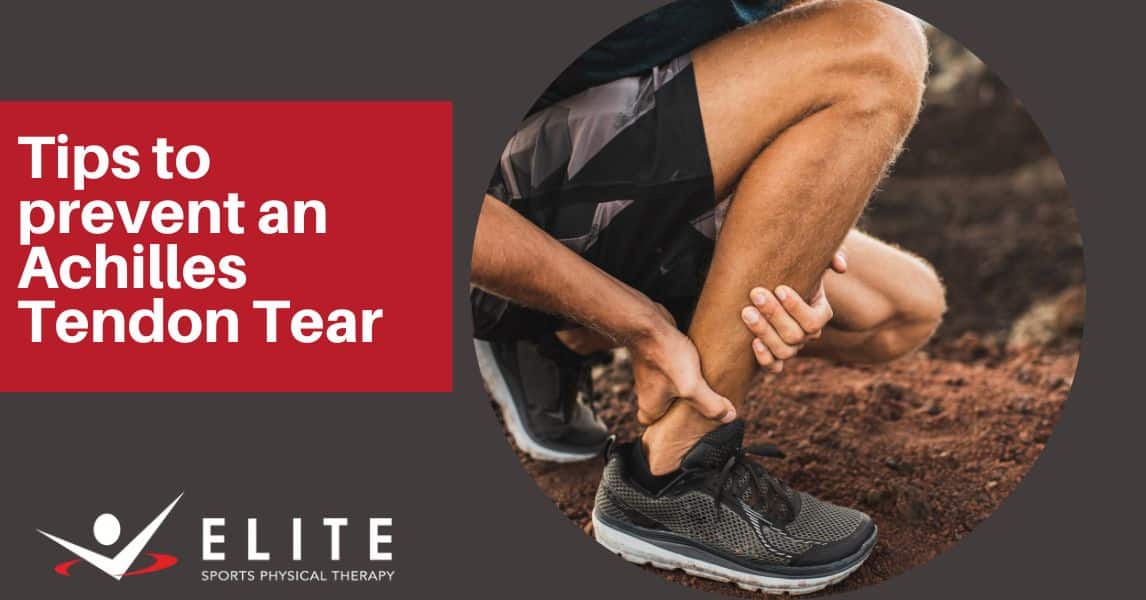If you’ve ever felt the dull ache of Achilles pain rise up in your heel, you know it can stop you in your tracks. Certain exercises, activities and footwear can have you rubbing your heels and limping in pain. An inflammatory response from overuse can turn into an Achilles injury, or suddenly going too big when your body is unprepared can lead to serious damage from a tear of the Achilles tendon. The Achilles tendon is a thick band of tissue that connects the calf muscles to the heel bone. This hearty tendon is critical for walking, running, and jumping.
What is an Achilles Tendon Tear?
An Achilles tendon tear is a serious injury that can occur when the tendon is suddenly overstretched or torn. This can happen during sports activities that involve running or jumping, or during everyday activities, like walking down stairs. Recovery can be long and arduous with complications and setbacks. A 2015 study showed that the incidence of Achilles tendon tear has risen significantly over recent decades and non-surgical options for recovery have become more common.
Tear Prevention Tips
When it comes to this serious injury, prevention truly is the best medicine. Several simple preventative measures can be added to your routine to make sure you steer clear of Achilles injuries:
- Stretch and strengthen regularly.
- Stretching your calf muscles helps to keep the Achilles tendon flexible and strong. Stretch your calves before and after exercising and throughout the day.
- Strengthen your calf muscles. Strong calf muscles help to support the Achilles tendon and reduce the risk of injury. You can strengthen your calf muscles by doing calf raises in different directions, seated and standing, either with your weight on your toes or with your heels on the ground.
- Make a simple stretching and strength routine part of your daily living to maximize the preventative benefits.
- Wear proper footwear. Shoes that provide good arch support and cushioning can help to reduce stress on the Achilles tendon. Avoid wearing shoes that are too loose or too tight. If your choice of footwear causes pain anywhere from your feet to your hips, consider giving another brand or type of shoe a try. Consider purchasing insoles created for different activities to replace the original footwear insoles or see a podiatrist about custom-made orthotic inserts if you have continuing, unresolved problems.
- Gradually increase your activity level. If you are new to exercise or if you’ve been inactive for a while, it’s important to gradually increase your activity level. This will help to prevent your Achilles tendon from becoming injured and slowly build tolerance and stamina. If you start to feel discomfort, back off and continue at a lower level of activity until you feel comfortable again.
- Exercise Smartly. Hydrate before, during, and after activity to help keep the Achilles tendon flexible and strong. Conduct proper warmups and stretches prior to exercising to prepare muscles. Make cool downs a part of your exercise routine. Cool downs reduce inflammation and the risk of injury. Choose softer surfaces to run on if possible. Lose weight if you are overweight or obese. Extra weight significantly increases the load on the Achilles tendon.
- Listen to your body. If you experience pain in your Achilles tendon, stop exercising and rest. Do not try to push through the pain, as this could make the injury worse. Continue to support the tendon by performing stretching and strengthening exercises if they do not cause you pain.
It’s important to remember that even if you take all the necessary precautions, an injury can still happen. If you do experience an Achilles tendon tear, it is important to see a doctor right away. Early diagnosis and treatment can help to improve your chances of a full recovery. Physical therapy can help prevent further injury in the early stages and strengthen weaknesses and imbalances that may be the root cause. If you find yourself in the unfortunate position of dealing with an Achilles tendon tear, physical therapy can be a critical component in recovery and avoiding reinjury in the future. If you’re located in central Texas near Waco or Clifton, give Elite Sports Physical Therapy a call.

